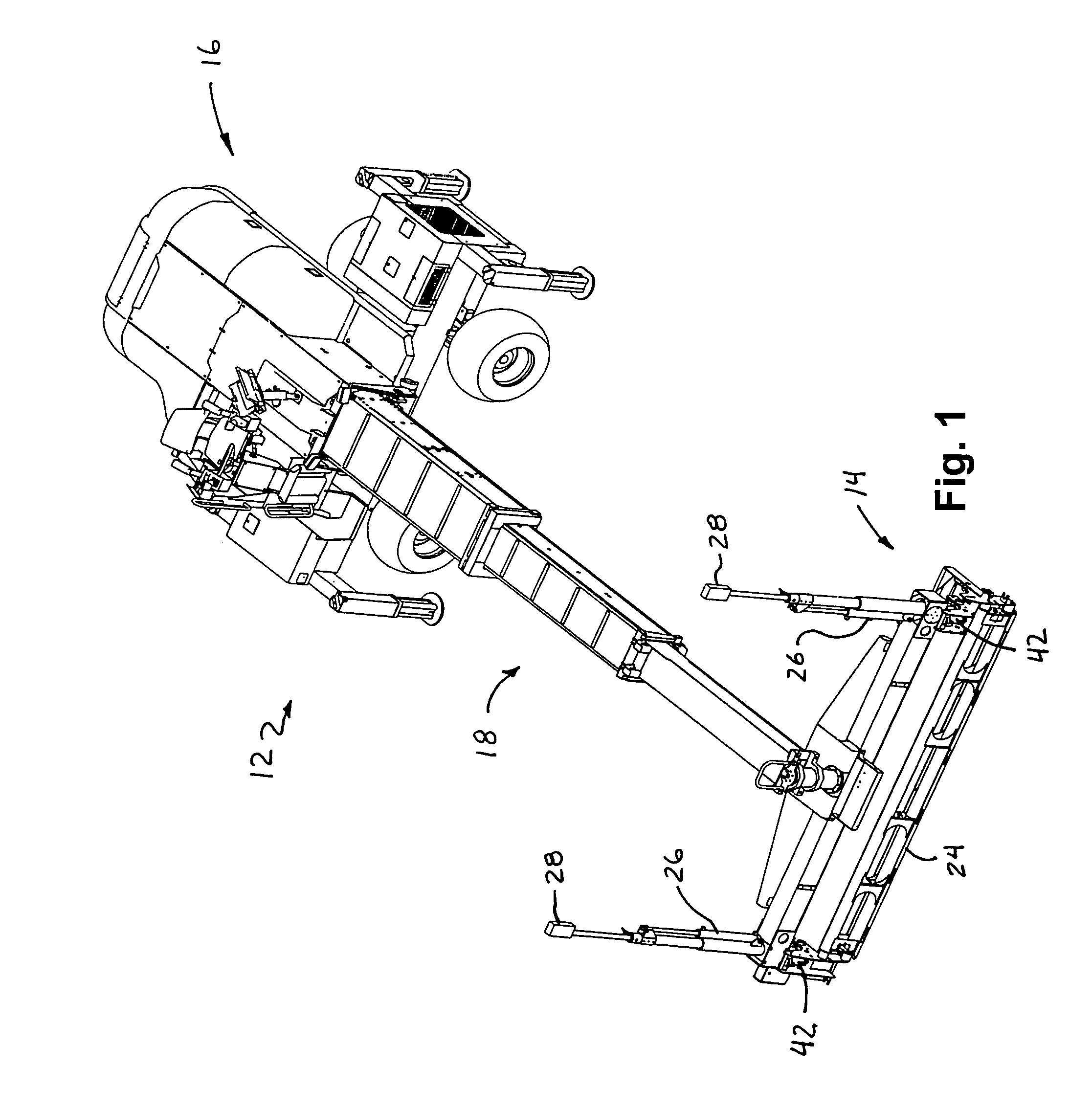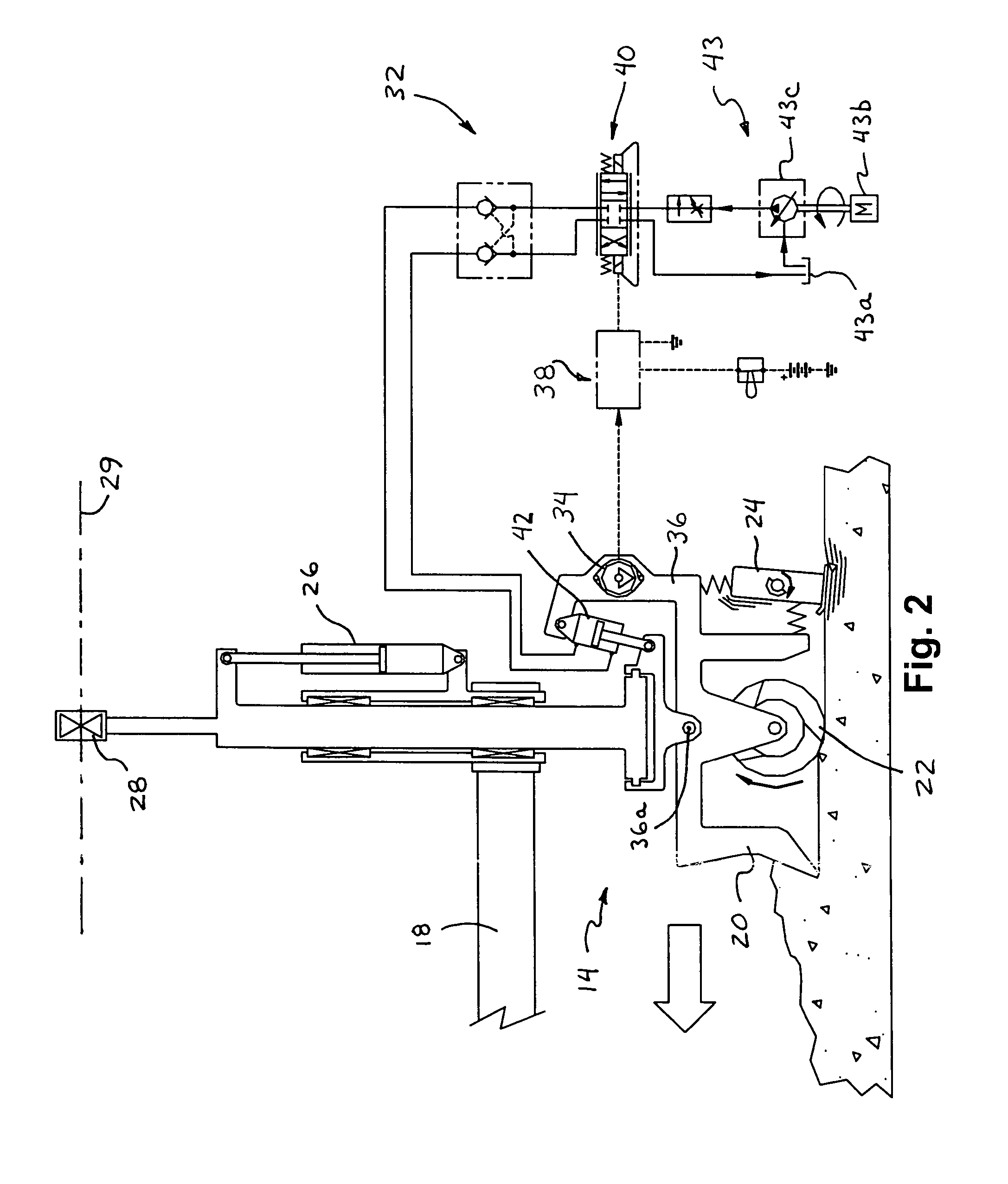Apparatus and method for improving the control of a concrete screed head assembly
a technology of concrete screeding and control apparatus, which is applied in the direction of construction, construction, and building material handling, can solve the problems of increasing the difficulty of maneuvering forklift machines along the aisle, and increasing the difficulty of navigating the aisle, so as to improve the control of the concrete screeding assembly, improve the surface quality of the concrete floor, and avoid the effect of minimizing the creation of vibrating member depressions
- Summary
- Abstract
- Description
- Claims
- Application Information
AI Technical Summary
Benefits of technology
Problems solved by technology
Method used
Image
Examples
Embodiment Construction
[0062]Referring now specifically to the drawings and the illustrative embodiments depicted therein, an automated soft landing control system 10 for a concrete screeding machine or device 12 is automatically operable to control the landing of the screed head assembly 14 onto a concrete surface (FIGS. 1 and 4A–C). Soft landing control system 10 may be applied to a concrete screeding machine to substantially improve the quality of concrete floors at overlapping or cold-joint areas of the leveled and smoothed concrete. Soft landing control system 10 is operable to delay engagement of the vibrating member of the screed head assembly with the concrete surface until after the vibrating member has moved from the overlap area of already screeded concrete to an area of not yet screeded concrete, in order to reduce or substantially preclude damage or depressions or irregularities in the already screeded concrete, as discussed below.
[0063]Concrete screeding machine 12 may comprise any type of c...
PUM
 Login to View More
Login to View More Abstract
Description
Claims
Application Information
 Login to View More
Login to View More - R&D
- Intellectual Property
- Life Sciences
- Materials
- Tech Scout
- Unparalleled Data Quality
- Higher Quality Content
- 60% Fewer Hallucinations
Browse by: Latest US Patents, China's latest patents, Technical Efficacy Thesaurus, Application Domain, Technology Topic, Popular Technical Reports.
© 2025 PatSnap. All rights reserved.Legal|Privacy policy|Modern Slavery Act Transparency Statement|Sitemap|About US| Contact US: help@patsnap.com



